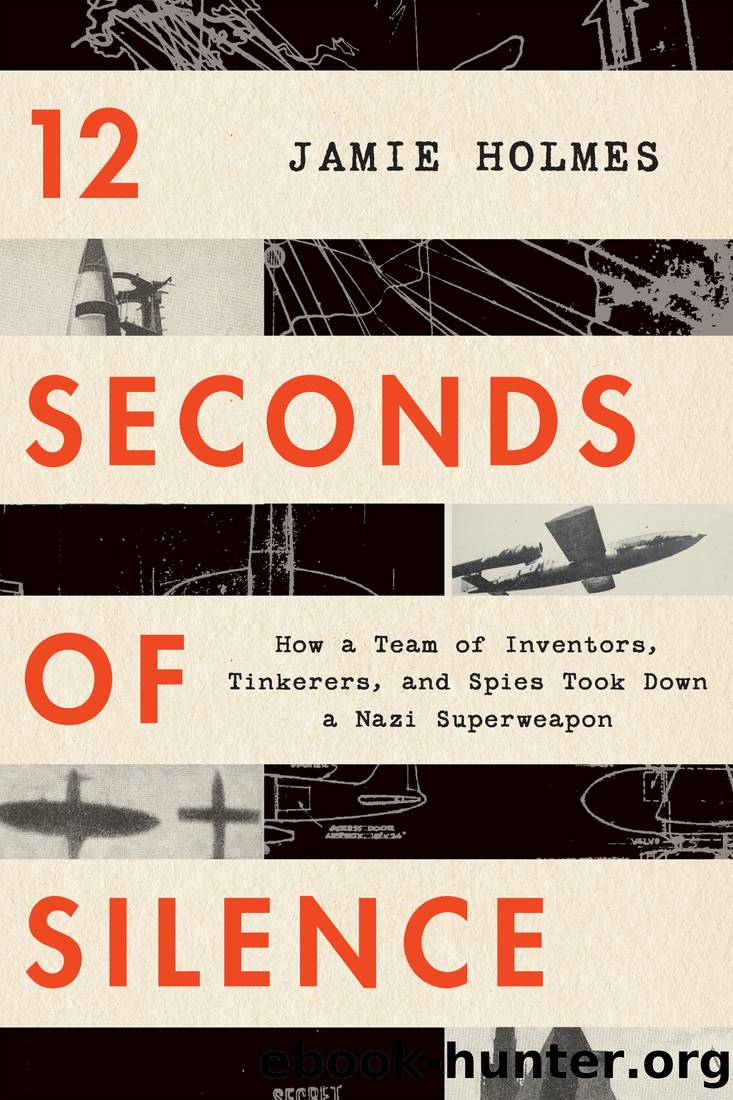12 Seconds of Silence: How a Team of Inventors, Tinkerers, and Spies Took Down a Nazi Superweapon by Jamie Holmes

Author:Jamie Holmes [Holmes, Jamie]
Language: eng
Format: epub
ISBN: 9781328459855
Google: yk-dDwAAQBAJ
Amazon: B07T4J3Z3V
Publisher: HMH Books
Published: 2020-08-03T23:00:00+00:00
24
Chemical Boys
This past week, we studied about chemical agents,” Ed Hatch informed his parents, as if he were checking in from boarding school. The last few days at Camp Sibert, Alabama, the eighteen-year-old reported, were “practically all class work, tests, problems . . . and lectures.” His unit, the 130th Chemical Processing Company, was poring over recipes for chemical solutions and suspensions.
“I enjoyed [it] very much,” he wrote, “and today I am reading over my notes.”
Despite the stakes involved, Hatch conveyed the innocence of a diligent schoolboy. He was of Eastern European, Jewish heritage, raised in a lower-middle-class neighborhood in Springfield, Massachusetts, not far from Connecticut’s northern border. His mother had left Lithuania in her youth to flee the wave of pogroms that claimed thousands of Jewish lives. His father was a machinist.
Hatch had graduated from Classical High School only seven months earlier. And yet Camp Sibert was a universe apart from his hometown, and from the steps of his school auditorium where he’d sat and listened with fellow students, the day after Pearl Harbor, as President Roosevelt declared war on Japan.
This was not Chemistry 101.
The 130th was taught the fundamentals of gas warfare. At Sibert, grunts didn’t just learn the textbook basics of mustard gas, tear gas, phosgene, and lewisite (a powerful blistering agent that smells like geraniums). The purpose of the thirty-seven-thousand-acre camp of rolling Alabama farmland was to provide ample space for large-scale “live agent” training. Troops here fired twenty-eight-pound chemical mortars loaded with burning white phosphorus. The camp had a field for testing chemical mines, and a toxic-gas yard of six square miles set aside as a “maneuver area.” At its center, Sibert housed a decontamination zone where recruits learned how to “reopen” terrain that had been gassed. Soldiers were trained to decontaminate trucks, airplanes, shell holes, walls, floors, and roads paved with gravel, sand, and crushed-stone macadam. The land was repeatedly gassed, treated, and gassed again.
Airplanes simulated chemical attacks from above.
Depending on the unit, trainees practiced with phosphorus grenades and grenade launchers, portable flame throwers, submachine guns, or bazookas. Some GIs would run field laboratories to test chemicals used in an attack. Others would run smoke generators for troop camouflage, operate decontamination equipment, or handle toxic gas. Hatch’s unit, as the name implied, did “processing.”
They processed clothing, applying a cutting-edge technique developed by one of Van Bush’s scientists, at DuPont’s laboratories, in 1942.
In case of a gas attack, the 130th had the job of protecting Allied troops by infusing their clothing with defensive chemicals. The procedure was a bit like doing laundry. Using industrial “predryers,” dryers, and “impregnator units” where the clothes were soaked in a secret chemical formula that included chlorinated paraffin, the men practiced plugging the microscopic holes in military uniforms.
Hatch’s unit was a hodgepodge group, a cultural grab bag of American miscellanea. Nicknames were handy. Weston Strout, who had worked at a shipyard in Maine before enlisting, was called “Red.” Vincent Zanfagna from downtown Boston, one of four brothers serving, was known as “Amigo.
Download
This site does not store any files on its server. We only index and link to content provided by other sites. Please contact the content providers to delete copyright contents if any and email us, we'll remove relevant links or contents immediately.
Learning SQL by Alan Beaulieu(5408)
Weapons of Math Destruction by Cathy O'Neil(5034)
iGen by Jean M. Twenge(4702)
Sapiens by Yuval Noah Harari(4534)
Digital Minimalism by Cal Newport;(4534)
Elon Musk by Ashlee Vance(3454)
The Age of Surveillance Capitalism by Shoshana Zuboff(3420)
Thing Explainer by Randall Munroe(3324)
Apollo 8 by Jeffrey Kluger(3199)
Future Crimes by Marc Goodman(3001)
The Science Book (Big Ideas Simply Explained) by DK(2744)
Who Can You Trust? by Rachel Botsman(2732)
I Live in the Future & Here's How It Works by Nick Bilton(2524)
Infinite Energy Technologies by Finley Eversole(2492)
Dawn of the New Everything by Jaron Lanier(2437)
Steve Jobs by Walter Isaacson(2415)
Chernobyl by Serhii Plokhy(2126)
Energy Myths and Realities by Vaclav Smil(2059)
Ben Franklin's Almanac by Candace Fleming(2051)
